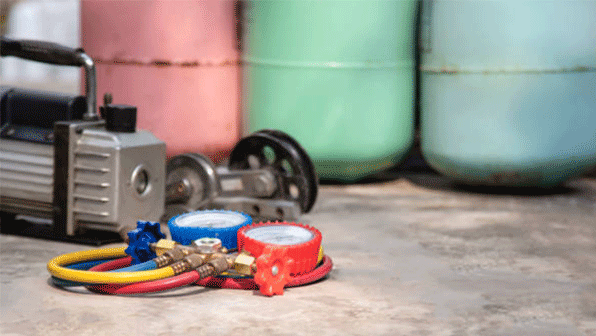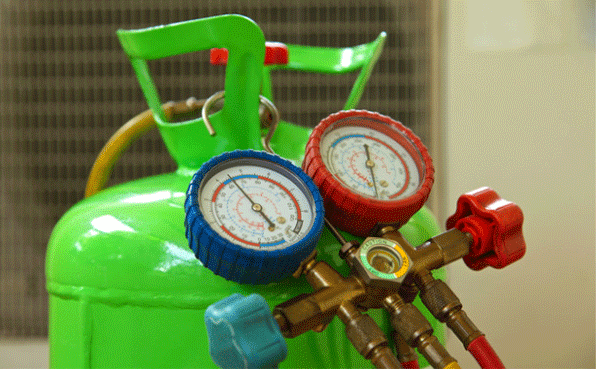
There are more than 80 kinds of substances that can be used as refrigerants. Do you know which are the commonly used refrigerants for refrigerators / freezers and cold storage, and what are the selection principles?
1. Selection of Refrigerants for Refrigerators and Freezers
1.1 Main Requirements for Refrigerants in Refrigerators and Freezers
(1) Sufficient low-temperature cooling capacity
Sufficient cooling capacity is required to achieve the low temperature for the refrigerator, e.g. below -15°C.
(2) Safe and harmless
Even if a leak occurs, it will not cause human poisoning, explosion, combustion and other safety accidents, and it should be extremely safe to use.
(3) Odorless and no pollution to food
After the refrigerant leaks, it will not leave any odor and contaminate the food in the refrigerator. It needs to be colorless and odorless.
(4) Good thermal stability and long service life
For long-term operation of household refrigerators, the refrigerant needs to have sufficient thermal stability and a long service life.
(5) Wide operating temperature range
The operating temperature range of household refrigerators is wide, and the refrigerant also needs a wide operating temperature range.
(6) No ozone depletion
As a household product, refrigerants that damage the ozone layer cannot be used.

1.2 What Are the Commonly Used Refrigerants for Refrigerators and Freezers?
In the past, the most common refrigerant for refrigerators was R12. In 2010, the use of R12 was completely banned worldwide. At present, the new refrigerants used in refrigerators are mainly R134a, R600, and R152+R22 azeotropic refrigerants, and their respective characteristics are as follows.
R134a

The standard evaporation temperature of R134a is -26.5℃, and the freezing point is -101℃, which is a medium-temperature refrigerant.
Its characteristics are similar to R12:
● Colorless, odorless, non-toxic, non-flammable, non-explosive;
● Its latent heat of vaporization is greater than that of R12;
● It is incompatible with mineral lubricants and polyester synthetic oil (such as polyolefin glycol) must be used;
● Strong water absorption, easy to react with water to generate acid, corroding refrigeration pipelines and compressors. Therefor, there are higher requirements for the dryness of the system, and the insulation level of the compressor coil and insulation materials must be strengthened;
● Its breakdown voltage and dielectric constant are lower than those of R12;
● Its thermal conductivity is about 30% higher than that of R12;
● Its corrosion and leakage resistance to metal and non-metal materials are the same as those of R12;
● R134a has no destructive effect on the atmospheric ozone layer, but still has a certain greenhouse effect (GWP value is about 0.27), and is currently one of the alternative working fluids for R12.
R600a

R600a, isobutane, is a new hydrocarbon refrigerant with excellent performance. It is derived from natural ingredients, does not damage the ozone layer, has no greenhouse effect, and is green and environmentally friendly.
●Its characteristics are large latent heat of evaporation and strong cooling capacity;
●Good flow performance, low delivery pressure, low power consumption, and slow temperature rising speed.
●Compatible with various compressor lubricants.
●It is a colorless gas at room temperature.
●R600a is mainly used to replace R12 refrigerant and is now mostly used in household refrigerator equipment.
●R600a is also a flammable gas. It can form an explosive mixture when mixed with air. It is in danger of combustion and explosion when encountering heat sources and open flames.
Note: When the content of R600a in the refrigeration system is insufficient, it will cause excessive pressure, abnormal machine sounds, and shortened compressor life.
R152+R22 azeotropic refrigerant
●Flammable and compatible with the R12 refrigeration system. If it is used to replace R12, no major changes will be required to the original refrigeration system.
●Leakage has little effect on its composition. At a mass fraction of 50/50, the ozone depletion potential ODP is 0.05 and the global warming potential GWP is 105, both of which are within the acceptable range.
●After selecting the appropriate ratio, it has excellent thermal performance, fast cooling speed, and slightly reduced power consumption.
2. Selection of Refrigerants for Cold Storage
2.1 Special Requirements for Refrigerants in General Cold Storage
(1) It needs to provide extremely low temperature cooling capacity, e.g. -50°C.
(2) High thermal stability and long service life.
(3) It can work stably at low temperatures.
(4) It has good solubility with compressor oil.
(5) Strong environmental adaptability, suitable for different regions.
(6) Non-corrosive to large equipment.
(7) Friendly to the ozone layer, environmentally friendly and sustainable.
2.2 What Are the Commonly Used Refrigerants in Cold Storage?
Ammonia for large cold storage
Ammonia is currently the most widely used medium-pressure and medium-temperature refrigerant. The solidification temperature of ammonia is -77.7℃, and the standard evaporation temperature is -33.3℃.
Advantages: easy to obtain, with low price, moderate pressure, large unit cooling capacity, high heat release coefficient and low flow resistance.
Disadvantages: pungent, smelly, toxic, flammable, explosive and corrosive to copper and copper alloys.
R22 for most cold storage

The standard evaporation temperature of R22 is about -41°C and the solidification temperature is about -160°C.
Advantages: the condensing pressure is similar to that of ammonia, the standard refrigeration capacity per unit volume is about 454 kcal/m, and it is widely used in the two-stage compression or air conditioning and refrigeration systems at -40 to -60℃.
Disadvantages: it damages the ozone layer and has a greenhouse effect.
R-404A for small low-temperature cold storage

R404A is a non-azeotropic mixed refrigerant that does not contain chlorine. It is a colorless gas at room temperature and pressure, and is a liquefied compressed gas stored in a cylinder.
Advantages: it is an environmentally friendly refrigerant that does not damage the atmospheric ozone layer. It is mainly used to replace R22, with the characteristics of cleanliness, low toxicity, non-flammability, and good refrigeration effect, widely used in medium and low temperature refrigeration systems.
Disadvantages: high production cost and high price.


